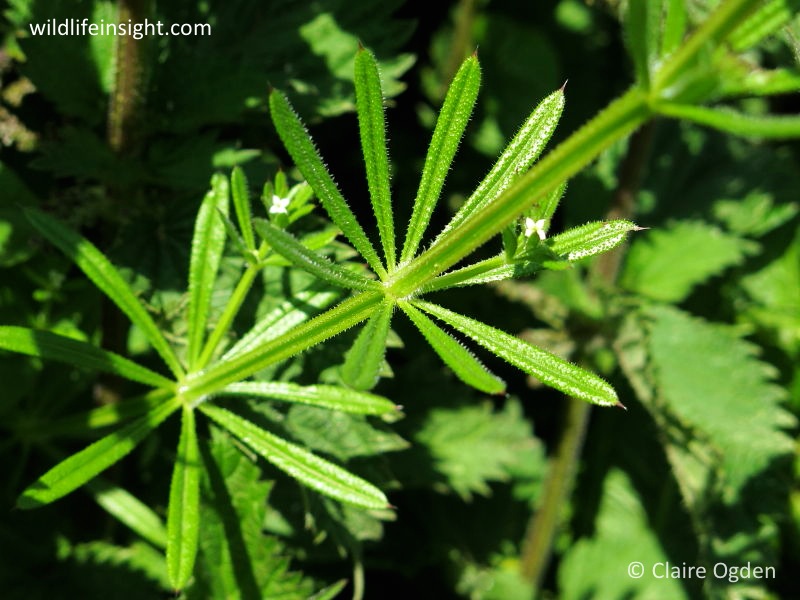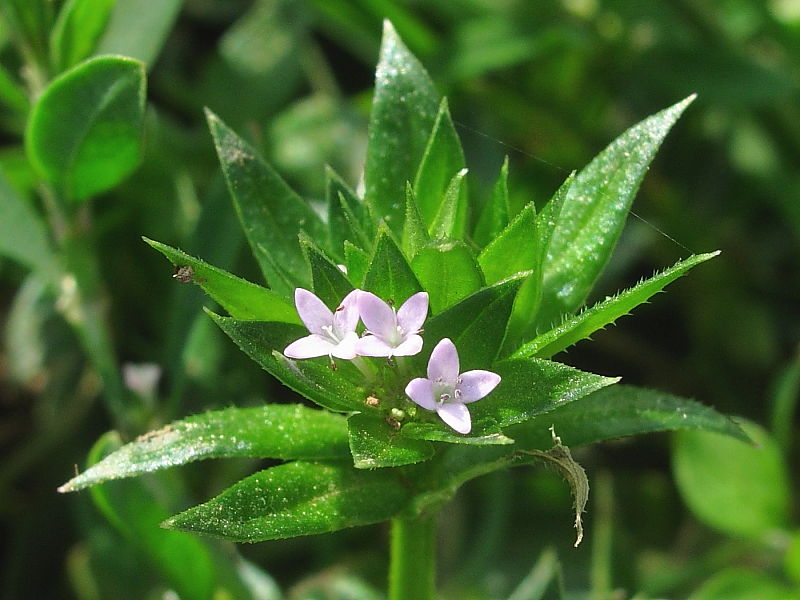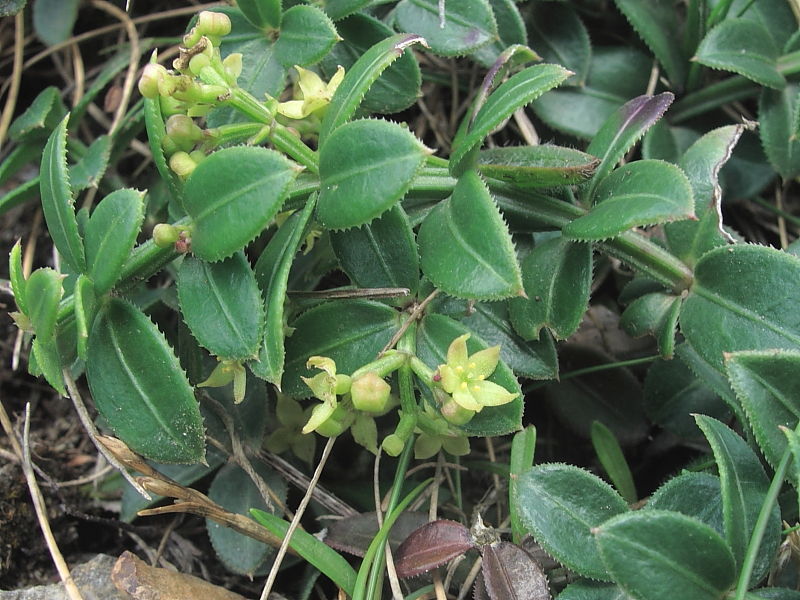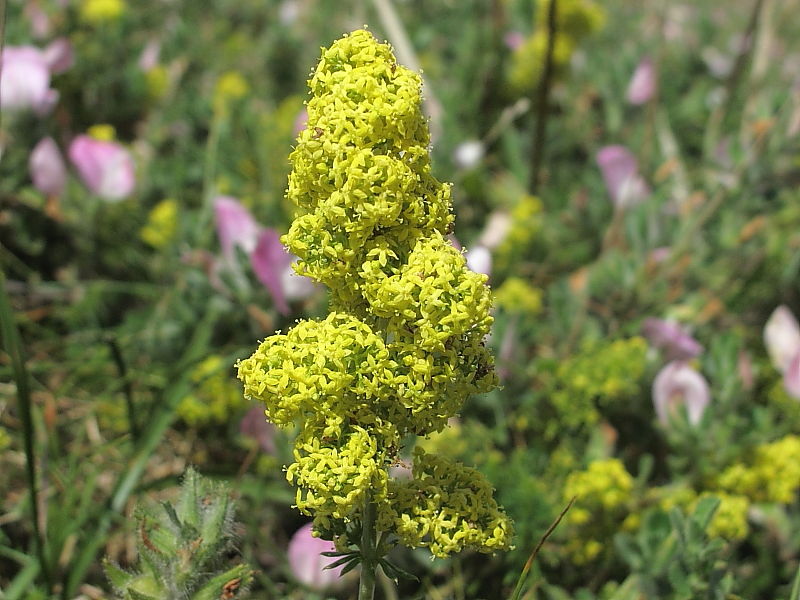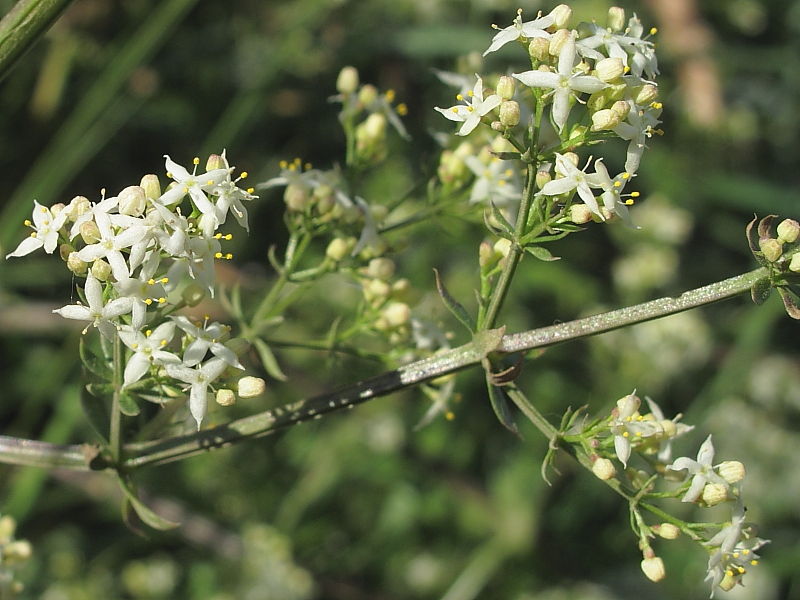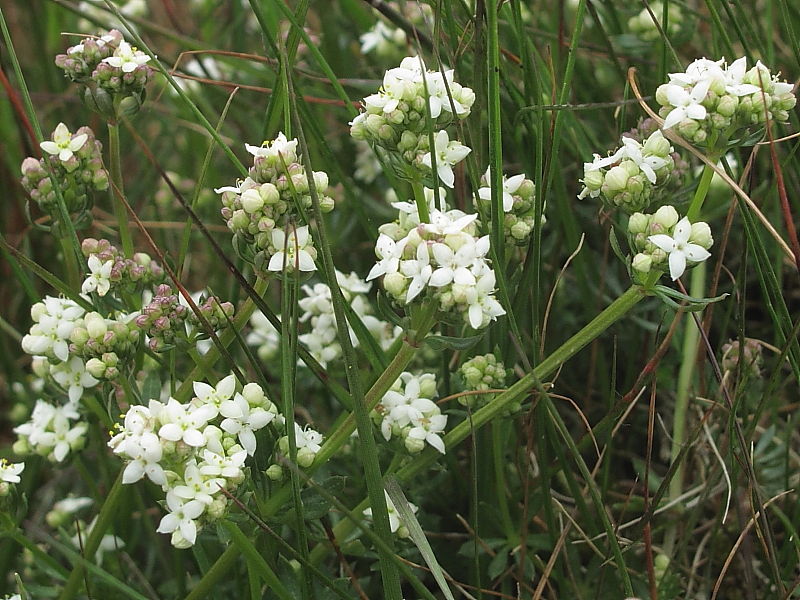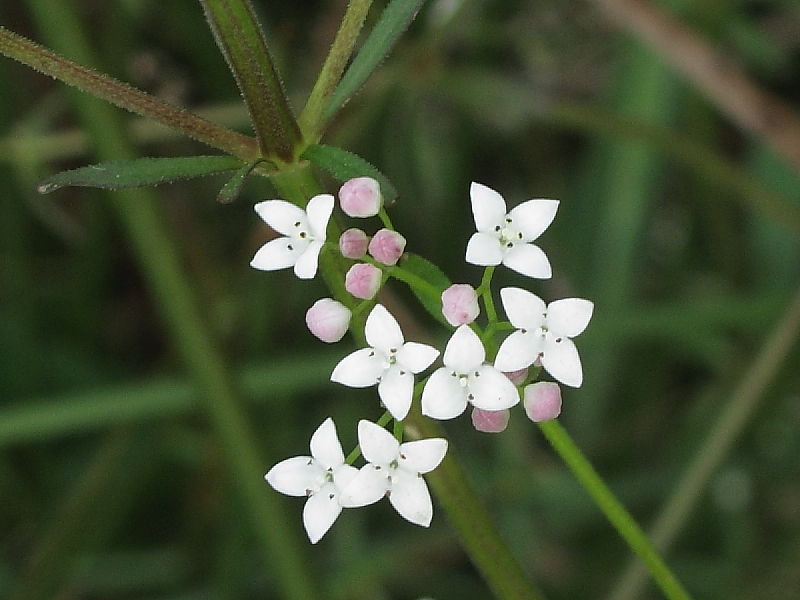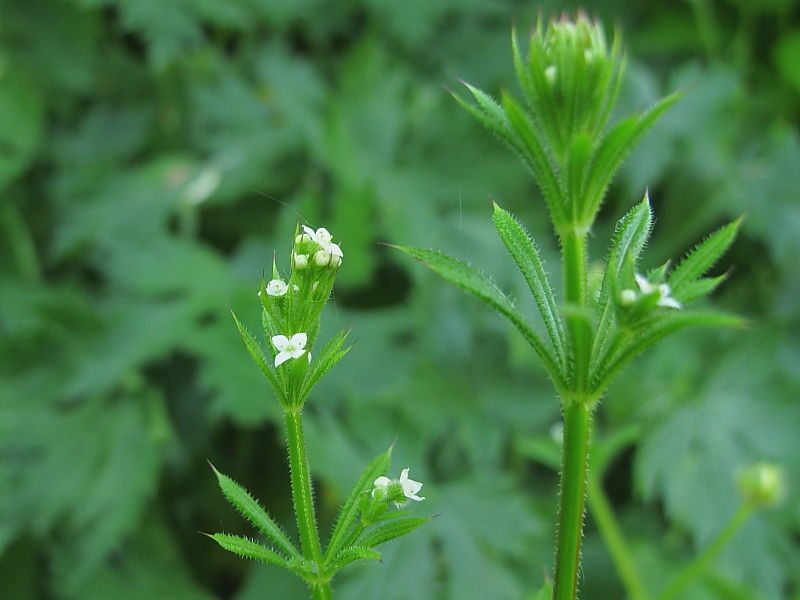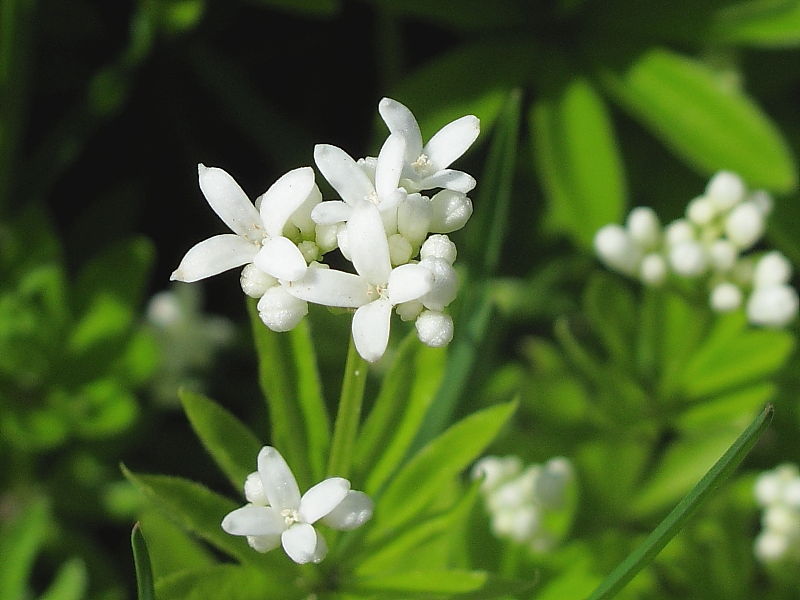Introduction to British Bedstraws
The Rubiaceae family is fairly easy to recognize as it has whorls of leaf-like structures at regular intervals along the four-angled stem. The whorls look as though they’re made up of leaves but in fact there are only two opposite leaves with leaf-like stipules making up the rest of each whorl.
Outside of Britain there are members of this family that lack the whorl of leafs, for example the coffee plant in the tropics, but in the British Isles they all have these whorls.
One member of this family, Cleavers (Galium aparine), will be very familiar to most people in Britain, especially young children, as it sticks to clothing. It is abundant throught Britain and has many other names including “Goosegrass”, “Sticky Willy” and the “Velcro plant”.
Each species of the British Bedstraw family has small flowers that are in branched inflorescences, either terminal or in the leaf axils.
The calyx is small or absent, whilst there are 4-5 petals forming a tube at the base and 4-5 stamens.
The fruits are 2 fused nutlets or a berry.
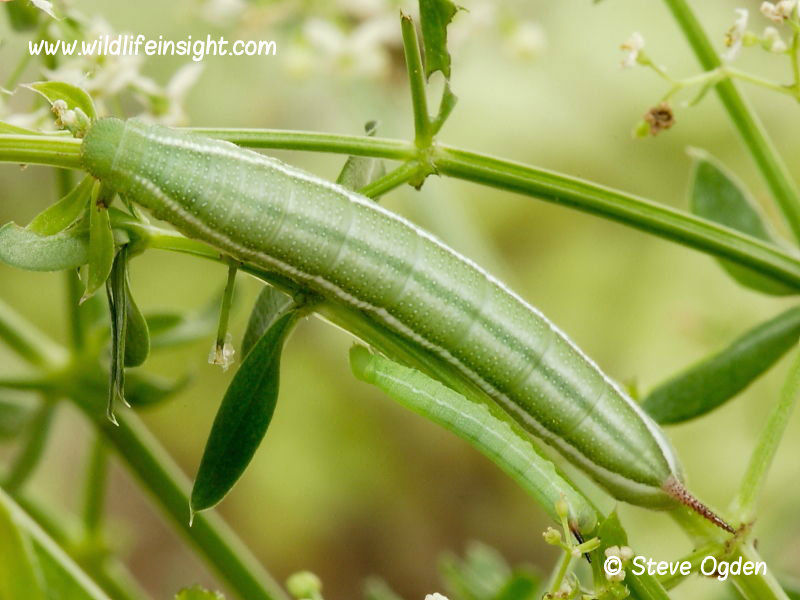
Some members of the Rubiaceae family flower as early as May whilst others are still in flower in September.
Various members of the Rubiaceae family are larval foodplants for many moth species including hawk-moths such as:
- Hummingbird Hawkmoth (Macroglossum stallatarum)
- Elephant Hawkmoth (Deilephila elpenor)
- Small Elephant Hawkmoth (Deilephila porcellus)
The key identification characteristics of the most common members of the Rubiaceae family in Britain are given below.
Field Madder (Sherardia arvensis)
The key identification characteristics of Field Madder (Sherardia arvensis) are:
- 4 petals
- fruit a pair of 1-seeded nutlets
- calyx of 4 distinct teeth
- lilac flowers
Wild Madder (Rubia peregrina)
The key identification characteristics of Wild Madder (Rubia peregrina) are:
- Evergreen scrambler
- 4-6 leaves in a whorl
- yellowish green flowers
- 5 petals
- fruit is a berry
Bedstraws (Galium)
The common identification characteristics of the most widespread British Bestraws (Galium) within the Rubiaceae family are:
- 4 petals
- fruit a pair of 1-seeded nutlets
- calyx absent
- plant more or less glabrous (if hairy at all, only sparsley)
- flowers in axillary and terminal cymes
- leaves all in a whorl and more or less the same length
Lady’s Bedstraw (Galium verum)
The key identification characteristics of Lady’s Bedstraw (Galium verum) are the ones listed above for all Bedstraws plus:
- yellow flowers
Hedge Bedstraw (Galium mullugo)
The key identification characteristics of Hedge Bedstraw (Galium mullugo) are the ones listed above for all Bedstraws plus:
- flowers white
- leaves 1-veined, 4-8 in a whorl
- stems smooth or slightly rough on angles
- leaves mucronate (with a short bristle-like tip)
- robust plant
- corolla lobes with fine points
- flowers in large terminal inflorescences
Heath Bedstraw (Galium saxatile)
The key identification characteristics of Heath Bedstraw (Galium saxatile) are the ones listed above for all Bedstraws plus:
- flowers white
- leaves 1-veined, 4-8 in a whorl
- stems smooth or slightly rough on angles
- leaves mucronate (with a short bristle-like tip)
- slender decumbent, prostrate or mat-forming plant
- corolla lobes acute
Common Marsh-bedstraw (Galium palustre)
The key identification characteristics of Common Marsh-bedstraw (Galium palustre) are the ones listed above for all Bedstraws plus:
- flowers white
- leaves 1-veined, 4-8 in a whorl
- stems smooth or slightly rough on angles
- leaves blunt or acute (never mucronate)
- leaves linear-oblong to lanceolate
- inflorescence widest below middle
- pedicels (stalk of a each flower) spreading widely at fruiting
Cleavers or Goosegrass (Galium aparine) – “Sticky Willy”
The key identification characteristics of Cleavers or Goosegrass (Galium aparine) are the ones listed above for all Bedstraws plus:
- flowers white
- leaves 1-veined, 4-8 in a whorl
- stems distinctly rough with recurved prickles on angles
- prickles on leaf margins pointing backwards
- fruits covered with hooked bristles
Woodruff (Galium odoratum)
The key identification characteristics of Woodruff (Galium odoratum) are:
- erect plant, 15-30cm tall
- white flowers in terminal umbel-like heads
- leaves in spreading whorls up stem
- leaves elliptical-lanceolate, 6-8 per whorl
- corolla four-lobed
- fruits covered with hooked bristles
The wild flower gallery has images of other wild flowers in Britain shown by family.
